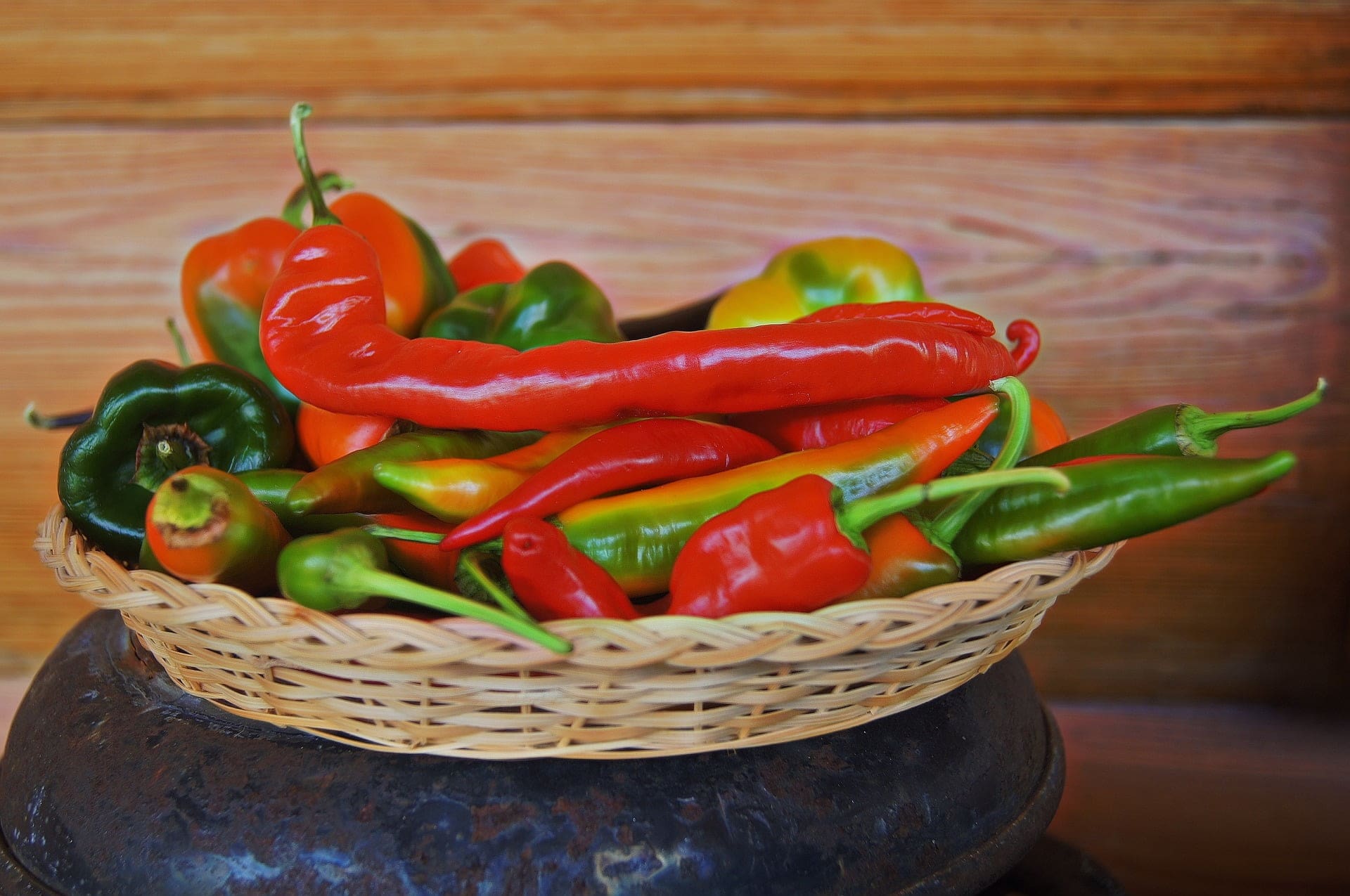Chiles/Chillies – must be the most valuable contribution by the New World to world cuisine. Chiles get their “heat” from a compound called capsaicin which is most concentrated in the seeds and white membranes, with lower concentrations in the flesh of the fruits. The amount of capsaicin depends on the variety of Chile as well as its ripeness, and experts agree that many other variables play a part in the ultimate spiciness of many varieties, including temperature, rainfall, and soil conditions. Ignoring this basic variability for a second, some chilies are spicier than others, as determined by the amount of capsaicin they contain. As a general rule, the larger, fleshier varieties are milder than the smaller, thinner-skinned varieties.
Appearance
When fresh, Chiles/Chillies have a characteristically smooth and shiny skin. They come in a variety of colours ranging from green to yellow, orange, fire engine red, and deep maroon. Chiles/Chillies can be eaten at any stage of maturity. They may be dried or frozen. Although freezing can/will result in a loss of flavour and spiciness unless they are blanched first. In their dried form the flavour is concentrated and, ounce for ounce, the spiciness may increase as much as tenfold. Dried chilies will keep almost indefinitely in an airtight container.
Uses
The uses of Chiles/Chillies are almost too numerous to mention. They are used fresh and dried, whole, chopped, and ground, raw, pickled. They can be cooked in sauces, pastes, oils, preserves, and powders.
Chiles/Chillies come in various guises and are marketed under various names which you will recognise. Cayenne pepper is the pulverized form of the dried red cayenne chile. Paprika is the dried and pulverized form of sweet and mildly spicy red chiles. Chile powder is a mixture of powdered chiles (often ancho chiles) with other herbs and spices such as oregano and garlic. Also hot sauces are made by preserving chiles in brine or vinegar. While Chile oils are made by steeping chiles in oil for a period of time. Pimientos are the preserved flesh of red chiles similar to bell peppers. Finally hot pepper flakes are the dried, crushed form of any of a variety of spicy red chiles.
Heat
Their “hotness” (it’s not actually heat, but rather a chemical stimulation of pain receptors in mucous membranes) is measured in Scoville units and ranges from zero Scoville units in the case of the mildest sweet bell peppers, to about 350,000 for the hottest habanero and Scotch bonnet varieties. It is said that capsaicin stimulates digestion and circulation, and it also provokes perspiration which accounts for the near-universal popularity of spicy foods in tropical climates. The flavours range from mild to infernally hot, as we have already seen, but the flavour spectrum is not limited to degrees of spiciness.
Different types of chilies are valued for their different flavour components everywhere chilies are used. Some are fresh and “green” (it’s a chlorophyll thing) in flavour while others can be slightly bitter (especially yellow chilies) to sweet with overtones of raisins, prunes, and chocolate. Some attack the tongue with their chemical assault, while others gently stimulate the back of the throat. Cooks in Central and South America and the Caribbean have been keenly aware of these differences for thousands of years and it is not uncommon for some traditional preparations to call for three, four, or even more types of chilies in order to form a combination of flavours from what each variety of Chile provides.
Yes, the Chiles/Chillies flavours can be overwhelming (especially to the uninitiated), but they can also be exceedingly subtle as well. Chiles get my vote for the most important spice of all time.


